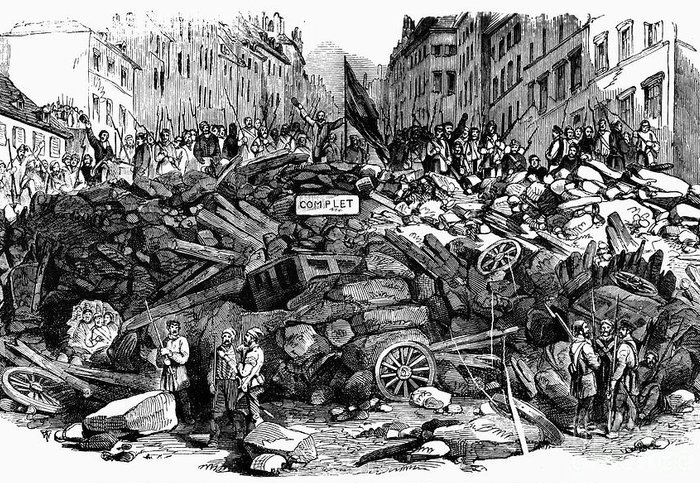Revolution of 1848 involved a series of uprisings in France, Germany, and the Austrian Empire, including parts of Italy. Causes of the revolution included demands for constitutional government; increasing nationalism among Germans, Italians, Hungarians, and Czechs; and peasant opposition to the manorial system in parts of Germany and in the Austrian Empire (see Manorialism ).

The revolution began in France in February 1848 as a protest against voting restrictions, political corruption, and poor economic conditions. Soon afterward, the French king, Louis Philippe, abdicated. Liberal politicians then set up a new government called the Second Republic.
The revolution quickly spread to the Austrian Empire and Germany. In the Austrian Empire, students and workers rioted in Vienna. Elsewhere in the empire, Hungarian and Czech nationalists rebelled against Austrian authority. In addition, Italians tried to drive their Austrian rulers from northern Italy. In Germany, liberal uprisings swept through the German Confederation, which consisted of Prussia and 38 other independent states. Workers in German cities demanded social reform. Representatives of various parts of Germany assembled in Frankfurt to try to unify the states into a single nation.
The Revolution of 1848 quickly failed. In France, Louis Napoleon Bonaparte, who had been elected president, declared himself emperor. Protests by French workers were brutally put down. In the Austrian Empire, troops crushed the nationalist uprisings and defeated the Italian rebels. In Germany, monarchies became more firmly established in the major German states. In addition, the assembly at Frankfurt broke up without achieving German unity. However, one major goal of the revolution was achieved—the ending of the manorial system in Germany and the Austrian Empire. Also as a result of the revolution, European rulers became more sensitive to the demands of nationalists and began experimenting with more liberal forms of government.
